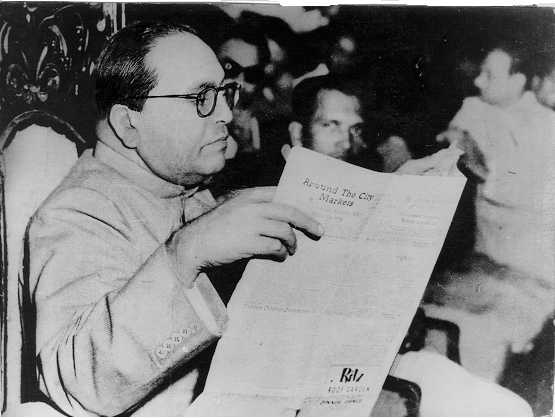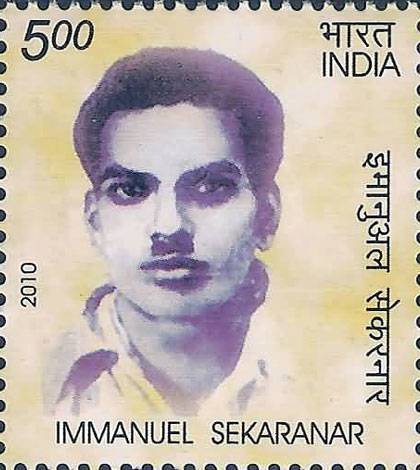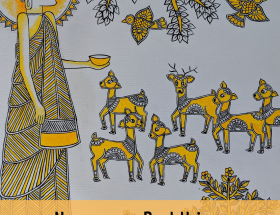Gerard Baared

[The long exit from Hinduism/Brahmanism for the ‘untouchables’ is naturally an ongoing movement, given the scale of the task, the multiple levels of responsibilities to understand, process and communicate people’s aspirations regarding their rights, and the complex logistic factors to be dealt with.
The term exit predicates an imagined or real inclusion, but the ‘untouchables’ were never included in Hinduism/Brahmanism. Hence this exit is basically an exit from the manufactured ‘included discourse’ of the state-aided dominant castes’ political strategies.
The 1930s were marked by several major conferences and meetings led by Dr Ambedkar and other leaders from Depressed Classes deliberating on the complete rejection of Hinduism for the emancipation of their communities. This unique history of a marginalized community’s engagement with issues of individual and collective rights guaranteed or denied in different religions, produces one of the most intellectually complex discourse. To document these debates which examined the social, political, economic and spiritual possibilities for ‘untouchable’ communities that are spread across different languages and regions, we have to splice together narratives from many sources.
The following is an excerpt from the paper titled, The Depressed Classes of India: Their Struggle for Emancipation, by Gerard Baared published in 1937. This section details the churning and the organized activities by the leaders of Depressed Classes as they pursued the exit from Hinduism and systematically evaluated the alternatives.~ Round Table India]
~~
At long last, on the 10 May 1935, the Poona Pact with the Government Amendment was adopted in the Commons by 152 votes to 35. It is indeed, as the Depressed Classes President Rao Bahadur M.C. Rajah called it, the “Magna Carta of the Depressed Classes community.”
But Dr. Ambedkar, their leader, and many with him were not satisfied. After all, the social condition of the Depressed Classes was still the same, and would change but very slowly as long as they remained, politically and religiously, within the fold of conservative Hinduism. They had lost the separate constituencies provided for them in the Communal Award; within the Hindu community they now formed a minority inferior to the other Hindus not only in number and religious status, but also educationally, economically, and physically. It was clear that a long, hard struggle was ahead of them. Dr. Ambedkar, therefore, decided to force the issue. All India was startled on October 13, 1935, when at the Bombay Presidency Depressed Classes Conference at Yeola, in the presence of 10,000 Harijans, he announced as his new solution of the Harijan problem a complete change of religion: “Choose any religion which gives you equality of status and treatment.”1
When Gandhi heard the unexpected news he said: “The speech attributed to Dr. Ambedkar seems unbelievable …,” and he added a wise remark:”A change of faith by him will not serve the cause …, for millions of unsophisticated and illiterate Harijans will not listen to him.”2 But Dr. Ambedkar remained firm in his decision during the violent storm that broke upon him from all quarters. It came from rigid Sanatanists, moderate reform Hindus, the Harijan-Sewak-Sangha, even from the numerous Harijan Conferences, mainly in the North and extreme South of India. The Depressed Classes of the Dekkhan, however, promised allegiance.
At the same time, letters and telegrams of congratulation, and also representatives, were sent to Dr. Ambedkar by various non-Hindu religious bodies. The Mussulmans were especially eager to entice the Depressed Classes within their fold, representing Islam as the most perfect religion of brotherhood in doctrine and practice and holding out to Dr. Ambedkar the prospect of be one of the political leaders of the eighty million Moslems in India. They organized associations and committees to launch an All-India campaign of Mohammedan propaganda among the Depressed Classes. The Buddhists of Calcutta regretted Dr. Ambedkar’s intended apostasy; but if he was bent on changing his religion, Buddhism was an ideal faith-very humane and at the same time of Indian origin. Malabar was canvassed by Buddhist missionary monks from Ceylon and by Sikh missionaries from the Punjab, where a strong and steady conversion movement of Harijans to Sikhism had been going on for about fifteen years. On the reception of fifty pariahs from Malabar into the Sikh community, leading orthodox Hindus confessed that they preferred the Untouchables to become Sikhs rather than members of any other religion. Dr. Ambedkar himself expressed his liking for the Sikhs, since they were self-respecting and disapproved of caste distinctions. Among the Depressed Classes of Malabar and other districts a strong movement towards Christianity set in. 250,000 Ezhavas decided to renounce Hinduism.
To bring the issue to a head, about ninety delegates of the Depressed Classes from all India held a conference at Lucknow (22 to 24 May 1936) with the object of considering which creed they would adopt. For, while he did not wish to interfere with any man’s conscience, Dr. Ambedkar, whom ill-health prevented from attending the conference, intended to make the conversion a common and simultaneous one. The various creeds of India were invited to expound to the Conference how they could meet the needs of the Untouchables. On the first day fourteen speakers, representing ten different creeds, were heard with great attention for seven hours. They were yellow-robed Buddhist 600ks, Moslem Maulvis in long cassocks, retired Civil Service officers, a college president, a wild “John the Baptist” from among the Sikhs, a fat Jain merchant, two Indian Christian clergymen, an Indian Christian lady, an aggressive Arya-Samajist abbot (reformed Hinduism) and some others.
Chandrika Pershad Jigyasu, one of the most influential Depressed Classes leaders, after almost seven hours of speeches, dared to put to the audience, crowded though it was with excitable Mohammedans and Sikhs, the blunt questions: “What did Islam do for us in a thousand years? What did Sikhism do for us? It was after the Christian missionaries had taken the Untouchables into their bosom that others began to take notice of us.” Another Depressed Classes delegate stressed the fact that ninety-nine per cent of the Indian Christians were from among the Untouchables. When a Hindu speaker began to hold forth the promises of his community to the Depressed Classes, he was howled down.
When each religion had had the hour of “free speech” allotted to it, the delegates of the Depressed Classes said they were not in a hurry to make their choice; it was not words but deeds that mattered. Therefore they would watch the various religious bodies and observe the treatment meted out by each to the Untouchables who had joined them; no religion would be considered that did not afford the fullest social and religious equality. At the end the Conference passed some resolutions, of which the most important was:
The Conference expresses its full confidence in Dr. Ambedkar and promises him its full support. It declares without reserve that the Depressed Classes must renounce Hinduism. The next All India Depressed Classes Conference will have to decide definitely which religion they are to embrace. The Conference expresses its dissatisfaction with the Harijan movement launched by Mahatma Gandhi.
The Catholic Hierarchy had not sent any official delegates to this conference. Two Jesuits of the Patna Mission and an Indian priest attended the meetings and in private conversations presented the Catholic Faith to the leaders, showing them what the Catholic Church had done for the Depressed Classes. The acting President, Mr. R. L. Biswas, deplored the Abyssinian war launched by a Catholic nation and, when it was all over, blessed by the Pope. He also wanted to know why a “reformation” had been necessary in the Catholic Church and why the caste-distinction was maintained among the Catholics of South India. Since the Conference several Fathers of the Patna Mission have had interviews with leaders of sectional Depressed Classes groups.
Some Hindus, with a concern for the Untouchables that was, not without the suspicion of self-interest, expressed their “fear” lest the Harijans by changing their religion should lose the political rights granted to them by the Poona Pact, which had increased the number of seats allotted to them precisely on the understanding that they would remain within the Hindu fold. The very object of Gandhi’s fast and of the Pact had been to maintain and consolidate the unity of Hinduism. Consequently, those of the Depressed Classes who actually gave up Hinduism could not enjoy the promised representation. Dr. Ambedkar defended the opposite view, but Parliamentary circles of Bombay informed him that he himself could not contest the election under the Poona Pact. There upon the Hindu leaders spread the report that he was no longer preparing his community for the elections and that he himself had withdrawn from the contest. Eventually he took up the position that the mere intention of giving up Hinduism as a religion did not deprive him of the political rights guaranteed by the Poona Pact; but he had to concede that, after actual conversion to a non-Hindu religion, those privileges would be forfeited.
After weeks of discussions Dr. Ambedkar agreed with Dr. B. S. Moonje, President of the Hindu Mahasabha (Great Hindu Council), upon a “formula for the amicable settlement of Dr. Ambedkar’s revolt against Hinduism”: the Hindu Mahasabha would not object to the conversion of the Depressed Classes, led by Dr. Ambedkar, to Sikhism, nor to the enjoyment by them of the political rights as provided in the Poona Pact. Dr. Ambedkar’s reasons are stated to be the following. Conversion to Islam or Christianity would denationalize the Depressed Classes and increase the danger of Moslem domination or strengthen the British position in India; on the other hand, if they turn Sikhs, they will remain full Indians with undivided loyalty and will become a strong factor in the cultural and political advancement of the country Sikhism being a native religion of India and a sort of reformed Hinduism.
The present position is this: it is hard to foreshadow, with any accuracy, what will become of the Depressed Classes in the near future. We must guard against the great mistake of overestimating the extent of the movement. The sixty millions of Untouchables are mostly illiterate, live in out of-the-way villages, and are consequently difficult to reach and organize. Many may not even have heard of the movement. Yet the movement is there; large numbers are preparing to leave Hinduism. This is the conviction of many missionaries all over India, and they are hard at work getting ready for the harvest of souls, which has already set in. Though the motives of the would-be converts may be merely social and material uplift, this does not exclude spiritual conversion. Many converts from these pariahs have become model Christians in the past. Blessed are the poor, for theirs is the kingdom of God. The whole body will not turn Catholic, but the movement to-day offers unlimited opportunities for the conversion of small groups-opportunities that may not be repeated. One thing is certain. The great temple of Hinduism, which has stood firm against Christ’s true Church for so many centuries, is being destroyed-but not by the Church. The very foundations of Hinduism are crumbling.
~~~
Courtesy: Studies: An Irish Quarterly Review, Vol. 26, No. 103 (Sep., 1937), pp. 399-417










